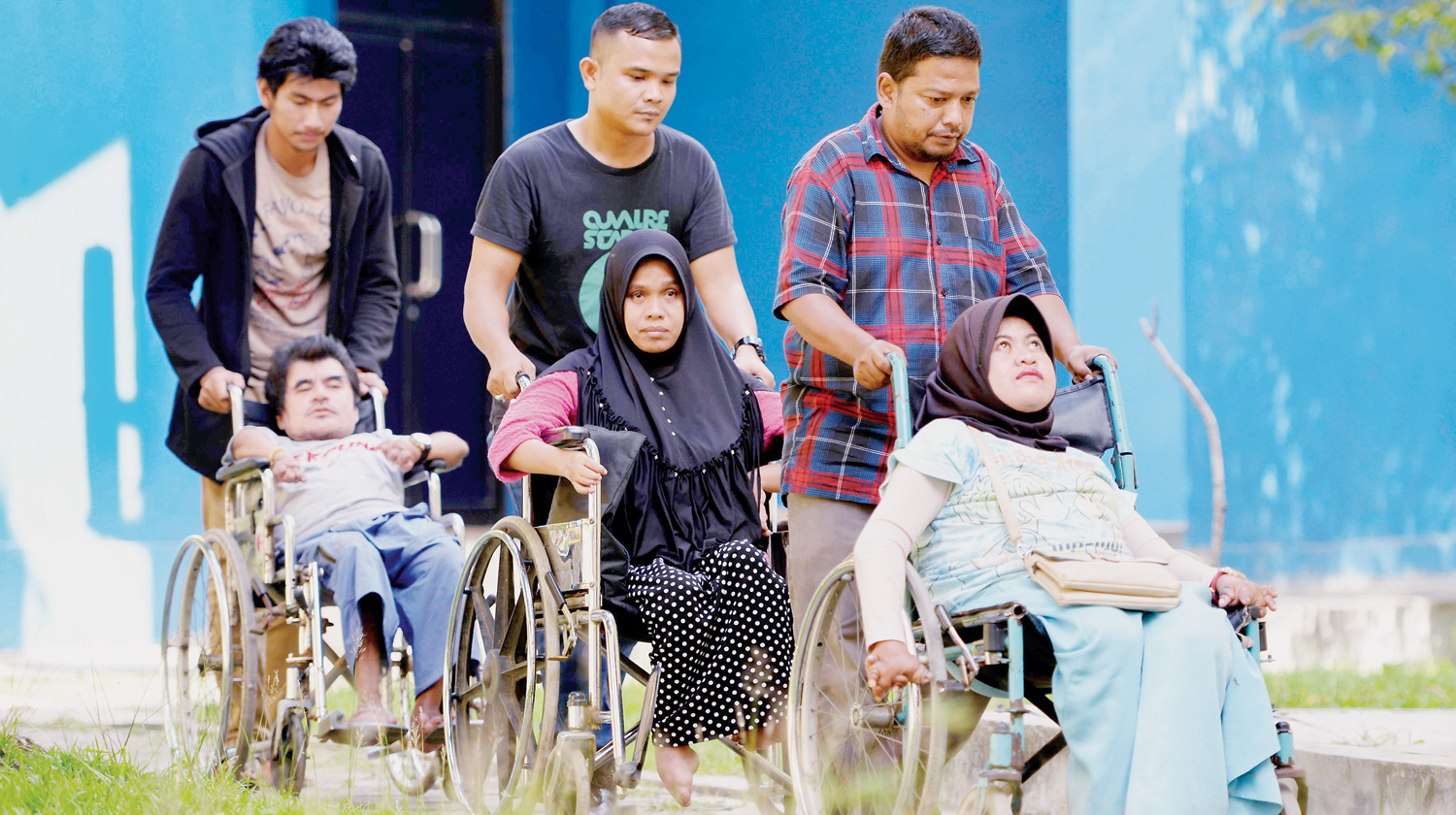

SURFBOARD tucked under his arm, Dery Setyawan sprints into the crashing waves. It is not just a physical challenge but an emotional one — most of his family and friends were swept to their deaths when a tsunami hit these shores 15 years ago. His hometown of Lampuuk was almost destroyed entirely, but despite his devastating loss, the father-of-two sees the water as a way to heal.
“Surfing has been the best cure for my tsunami trauma. When I am on the waves, all my fears are gone and I can embrace the past and be at peace with it,” he says.
On December 26, 2004, a monstrous 9.3 magnitude quake struck undersea off the coast of Sumatra. It sparked a tsunami nearly 100 feet high that killed more than 220,000 across a string of Indian Ocean countries, including Thailand, Sri Lanka and India.
Reaching as far as East Africa, the tsunami unleashed energy equivalent to 23,000 of the atomic bombs dropped on Hiroshima — and is considered among the deadliest natural disasters in history.
Indonesia was hardest hit with at least 170,000 killed, though the true death toll is likely to be higher as many bodies have yet to be recovered or identified.

The Indonesian city of Banda Aceh reported the highest number of casualties. Hastily dug mass graves are still being uncovered from this area with dozens of bodies pulled from the ground over the past year, including a woman whose driver’s licence was still in a wallet tucked into her pants pocket.
For Setyawan and others from Lampuuk, just outside Banda Aceh, surfing has become a way to help them start again.
“Water is part of our lives here. This is where we live, interact with family and others and make money for living,” the 35-year-old father tells as the disaster’s anniversary approaches.
His town was almost lost as the towering waves crashed ashore, ripping palm trees from the roots and flattening buildings.
Of Lampuuk’s 7,000 residents — just 300 survived. Setyawan’s mother, two grandmothers and infant brother were all killed, along with many of his friends.
He remembers the water crashing into his home the force dragging him some 200 metres till he hit some debris and clung on for his life. In years immediately following, the surviving residents were fearful of the water.
“We’d only look at the waves just to check whether the water level had gone down,” Setyawan said, referring to a tell-tale sign that a tsunami may be approaching.
But after the first anniversary of the disaster, Setyawan decided to face his fears.
He went back into the water.
“Waves from the beach are our friends, the ones that killed people during the tsunami were from the deep ocean. That was how I convinced myself before getting in for the first time,” he recalls.
Now a professional surfer, he’s competed in international and domestic competitions, and organised last month’s Aceh Surfing Championships.
Today, Lampuuk has been rebuilt with tsunami evacuation signs everywhere.
The population has grown to 2,000 — still a far cry from its original population, but Setyawan aims to transform the shores from a place of despair to one of hope. — AFP
HAERIL HALIM
Oman Observer is now on the WhatsApp channel. Click here



